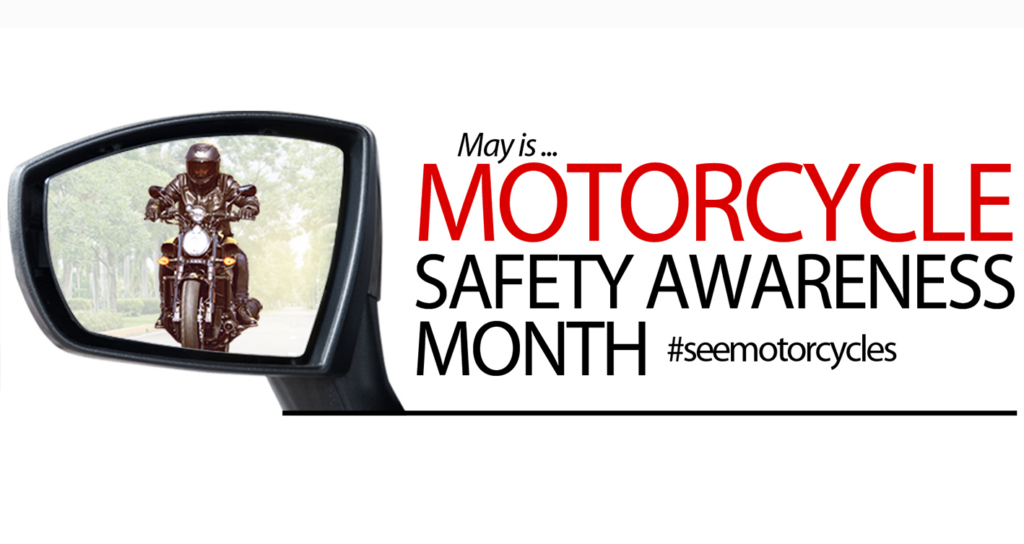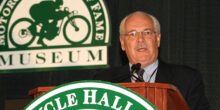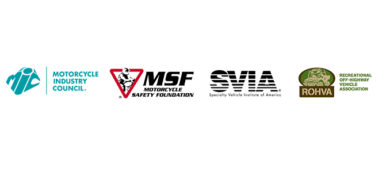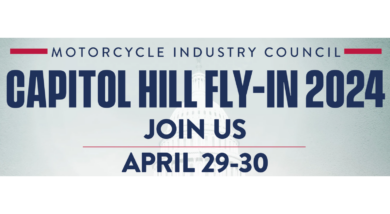NHTSA shares “grim” motorcyclist fatality report
May is Motorcycle Safety Awareness Month, and The National Highway Traffic Safety Administration (NHTSA) has released a report showing an increase of motorcycle fatalities from 2020 to 2021. Distraction, speeding and alcohol are the key factors of these fatalities.
NHTSA reported that in 2021, motorcyclist fatalities were up 7.7 percent from the year before, totaling 5,932 motorcyclists and 14 percent of all traffic fatalities. NHSTA also reported that 29 percent of motorcycle drivers killed were under the influence. This is the highest number of motorcyclists killed since 1975.
The Motorcycle Safety Foundation (MSF) encourages all drivers to “Expect Us, See Us,” and actively search for riders and stay focused on the road, as motorcycle and scooter riders are at greater risk of not being seen.
“The NHTSA data may be from 2021, but distraction, speeding and driving or riding while under the influence continue to be problems today. However, these are all things we can change,” says Rob Gladden, vice president of training operations for MSF. “May is Motorcycle Safety Awareness Month and we want to call attention to how smart, attentive driving and riding behaviors can save lives.”
For all vehicle drivers on the road, distraction-affected crashes rose 12 percent from 2020 to 2021, while speeding-related fatalities increased by 7.9 percent, and alcohol-impaired-driving fatalities rose 14 percent. The number of alcohol-impaired riders involved in fatalities jumped 19 percent from 2020 to 2021, according to NHTSA.
“One of the biggest risks to motorcyclists is drivers who don’t see the rider and turn across their paths, even if they are not driving distracted,” Gladden says. “Actively search for motorcyclists and look twice, especially before changing lanes or turning.”
Make safety a priority this May during Motorcycle Safety Awareness Month. The MSF offers five additional ways your behavior can help save lives:
As motorcycle and scooter riders:
- Be visible: Wear bright clothing and a light-colored helmet. Always have your headlight on, day and night, and avoid riding in the blind spots of cars and trucks. If possible, flash your brake light when slowing and before stopping.
- But pretend you are invisible: If you assume others can’t see you, you will tend to ride in a hyper-aware mindset and learn to notice every detail in your surroundings. Constantly search for changing conditions using the Search-Evaluate-Execute strategy (SEE) to assess and respond to hazards before you have to react to an emergency.
- Gear up every ride: Wear proper riding gear from head to toe. Full-face helmets provide the best protection, and jackets, pants, gloves, and boots that are made for riding will generally be made of abrasion-resistant material and provide additional comfort and protection.
- Follow the rules of the road: Riding respectfully — and legally — creates a safer environment for everyone. Unexpected maneuvers could startle or confuse others and cause a crash.
- Before you ride, look over your bike: Do a pre-ride check, which includes looking over your tires and wheels, checking fluids, cables, your bike’s chassis, lights and electronics, and the stands. Use the T-CLOCS inspection checklist to help you.
As car and truck drivers:
- Actively look for motorcyclists: While many cars have blind-spot detection and collision-avoidance systems, they are not a fail-safe. Also use your eyes and mirrors to check all around you. Motorcyclists can easily be hidden in blind spots or by other vehicles, so look twice before maneuvering into or around traffic.
- Focus on driving: Put down the phone; don’t let pets and passengers distract you.
- Use your turn signals: Signal your intentions. It can help others know what to expect or even alert them to get out of your way if they are in your blind spot.
- Give two-wheelers some space: Don’t tailgate or get too close next to riders. Give them space to maneuver and adjust to roadway conditions.
- Keep it in the vehicle: Don’t throw trash or cigarettes out the window. Make sure cargo is secured so it doesn’t fall onto the road and become a hazard.
Visit the Motorcycle Safety Foundation website to access safety booklets, tips and other reference guides to learn to ride or brush up on riding skills. The Motorcycle Safety Foundation creates education and training systems for riders of every experience level and offers refresher courses and advanced skills courses for experienced riders.









